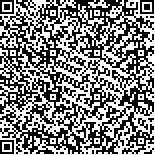| 本文已被:浏览 3541次 下载 3217次 |

码上扫一扫! |
|
|
| 胶州湾底栖生态系统健康评价——基于大型底栖动物生态学特征 |
|
丁敬坤1,2,3, 张雯雯1,2,3, 李阳1,2, 薛素燕1,2, 李加琦1,2, 蒋增杰1, 方建光1, 毛玉泽1,2
|
|
1.中国水产科学研究院黄海水产研究所 农业农村部海洋渔业可持续发展重点实验室 山东省渔业资源与生态环境重点实验室 青岛 266071;2.青岛海洋科学与技术试点国家实验室海洋生态与环境科学功能实验室 青岛 266237;3.上海海洋大学水产与生命学院 上海 201306
|
|
| 摘要: |
| 根据2017年7月山东省胶州湾海域的大型底栖动物调查数据,应用聚类分析、生物多样性和Multivariate-AZTI’s Marine Biotic Index (M-AMBI)等方法分析了大型底栖动物的生态学特征,评估了胶州湾底栖生态系统的健康状况。结果显示,调查海域共采集到大型底栖动物64种,其中,多毛类25种,甲壳动物23种,软体动物9种,棘皮动物和其他类群共7种。该海域大型底栖动物生物量和丰度的平均值分别为70.0 g/m2和132 ind./m2,菲律宾蛤仔(Ruditapes philippinarum)、寡鳃齿吻沙蚕(Nephthys oligobranchia)和纽虫(Nemertinea)是优势种。物种多样性指数( )为0.69~3.77,平均值为2.35,丰富度指数(d)为0.67~3.12,平均值为1.56,Pielou均匀度指数(J)为0.25~1.00,平均值为0.81。多样性AMBI指数(M-AMBI)为0.26~0.60,平均值为0.44。根据CLUSTER分析结果,在15%相似水平上可将研究站位划分为3个群落,菲律宾蛤仔养殖密度较大的站位群落结构较为相似,被划分在同一个群落中,聚类结果与菲律宾蛤仔养殖密切相关。大型底栖动物群落的多样性指数和M-AMBI指数分析显示,胶州湾海域底栖生态系统受到中等程度的干扰。 |
| 关键词: 胶州湾 大型底栖动物 海洋生态系统健康 生物多样性 M-AMBI指数 |
| DOI:10.19663/j.issn2095-9869.20181104001 |
| 分类号: |
| 基金项目: |
|
| Health Assessment of the Benthic Ecosystem in Jiaozhou Bay: Ecological Characteristics of the Macrobenthos |
|
DING Jingkun1,2,3, ZHANG Wenwen1,2,3, LI Yang1,2, XUE Suyan1,2, LI Jiaqi1,2, JIANG Zengjie1, FANG Jianguang1, MAO Yuze1,2
|
|
1.Yellow Sea Fisheries Research Institute, Chinese Academy of Fishery Sciences, Key Laboratory of Sustainable Development of Marine Fisheries, Ministry of Agriculture and Rural Affairs, Shandong Provincial Key Laboratory of Fishery Resources and Eco-Environment, Qingdao 266071;2.Laboratory for Marine Ecology and Environmental Science, Pilot National Laboratory for Marine Science and Technology (Qingdao), Qingdao 266237;3.College of Fisheries and Life Sciences, Shanghai Ocean University, Shanghai 201306
|
| Abstract: |
| Based on survey data from Jiaozhou Bay in July 2017, the ecological characteristics of macrobenthos were analyzed using cluster analysis, and biodiversity and Multivariate-AZTI’s Marine Biotic Index (M-AMBI) methods. A total of 64 species were identified, including 25 species of Polychaeta, 23 species of crustaceans, nine species of mollusks, and seven species belonging to other benthic groups and echinoderms. The average biomass and abundance were 70.0 g/m2 and 132 ind./m2, respectively. There were three dominant species, including Ruditapes philippinarum, Nephthys oligobranchia, and Nemertinea. The ranges of the Margalef species richness index, Shannon-Wiener diversity index, Pielou’s evenness index, and M-AMBI were 0.69~3.77, 0.67~3.12, 0.25~1.00 and 0.26~0.60, respectively. According to the results of the cluster analysis, the macrobenthos at the 15 stations could be clustered into three infaunal communities at 15% similarity. The station communities with higher density of clam larvae were divided into the same community, clustering results were related to Philippine clam farming. The Shannon-Wiener Index (H′) and M-AMBI analysis showed that the macrobenthic community tended to be moderately disturbed. |
| Key words: Jiaozhou Bay Macrobenthos Marine ecosystem health Biodiversity M-AMBI |